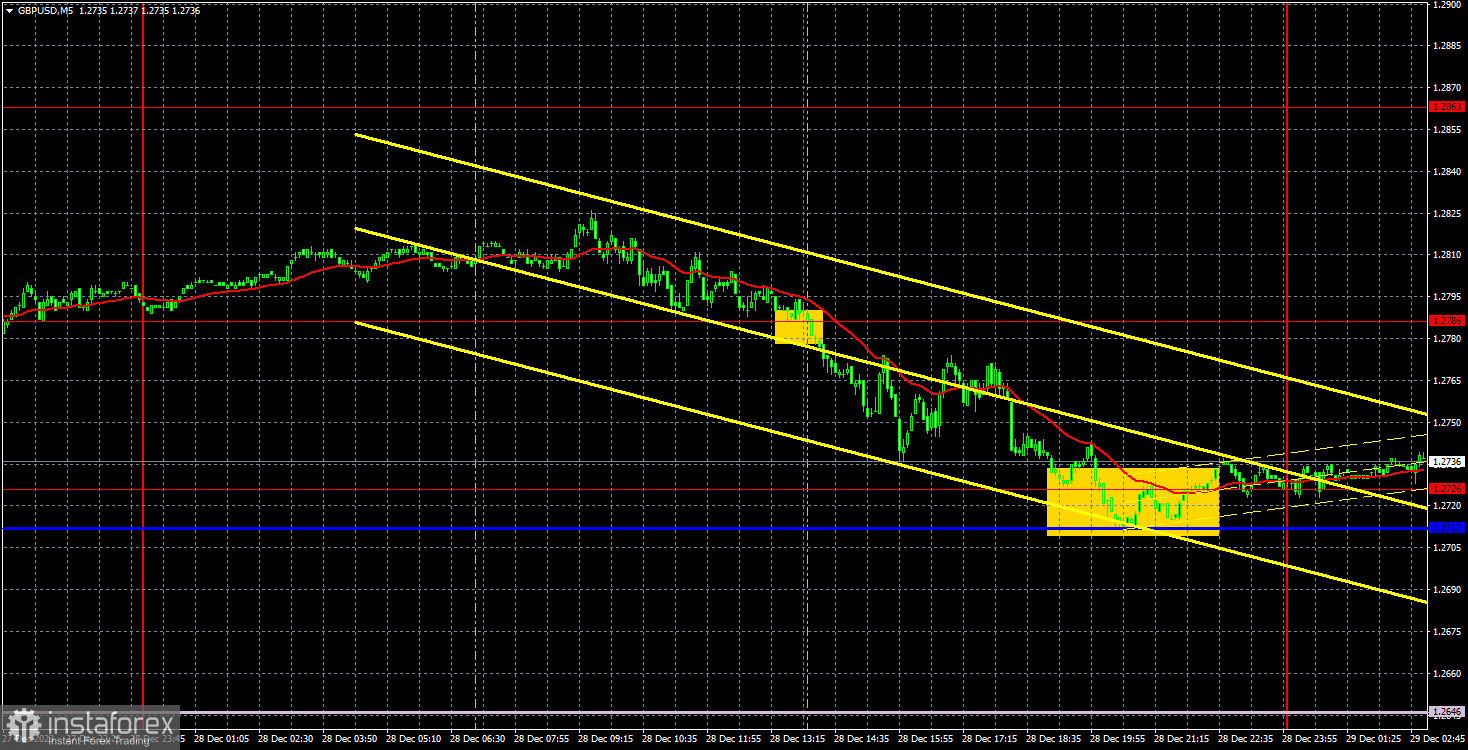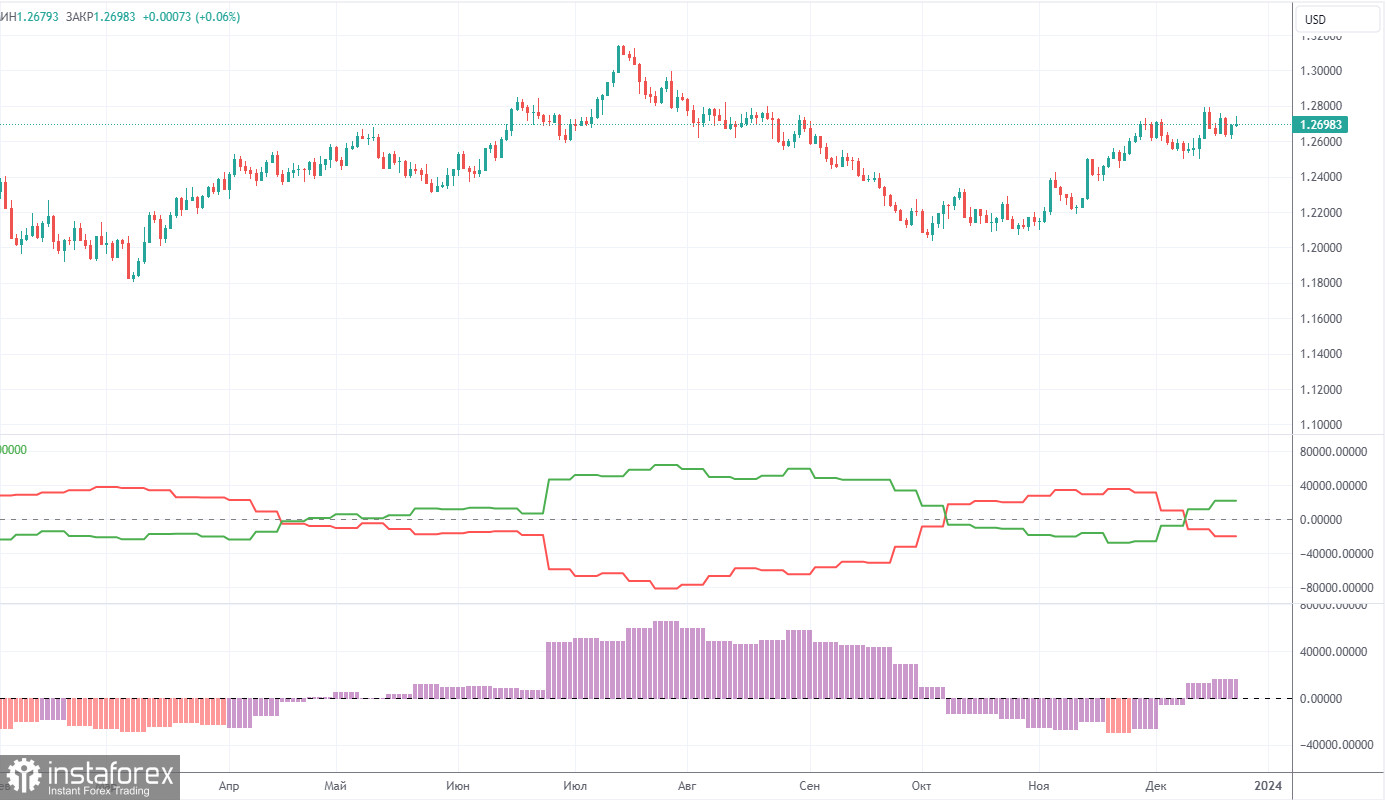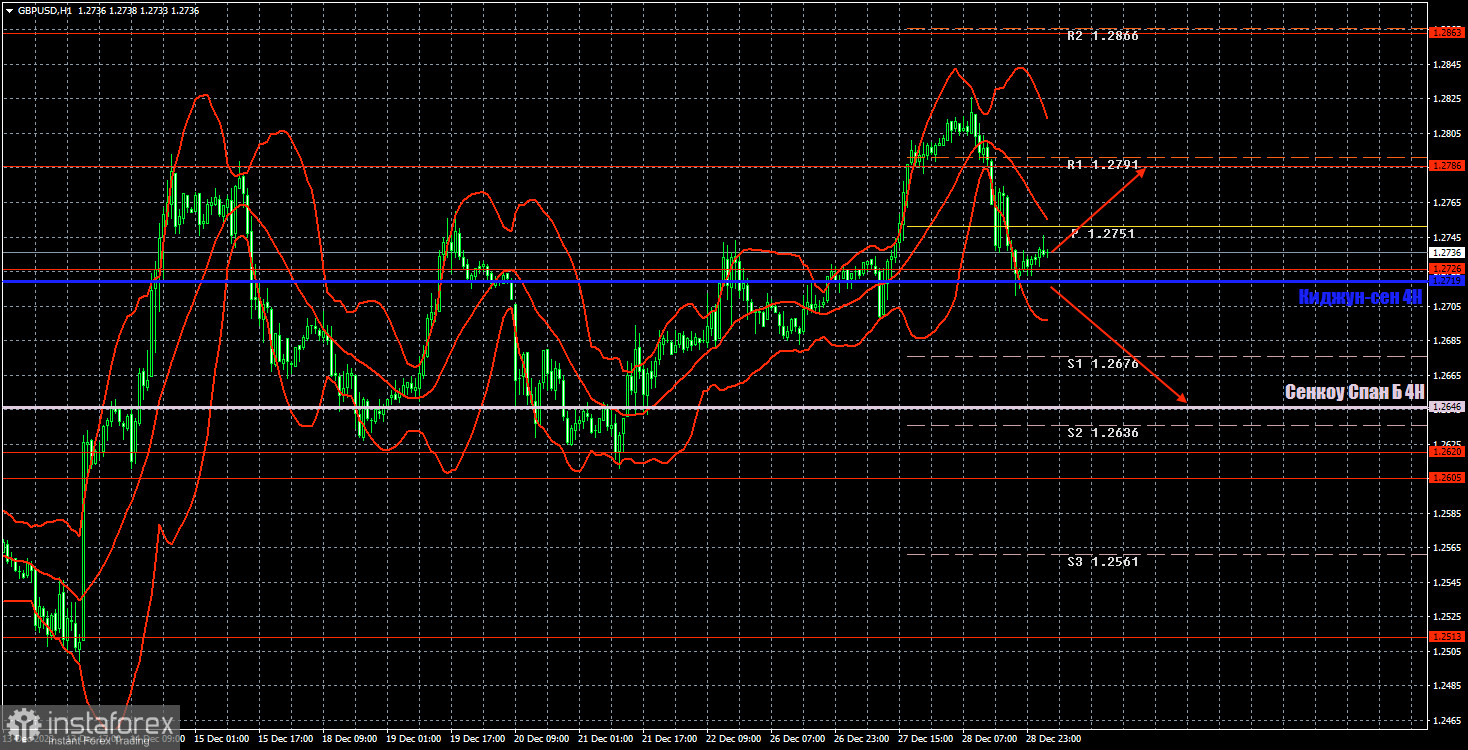Analysis of GBP/USD 5M

On Thursday, GBP/USD also faced negative pressure but did not settle below a critical line. We want to remind you that the Kijun-sen line is important as it acts as a kind of moving average. A breakthrough, if it happens first, indicates a possible change in the trend. A bounce from it suggests that the current trend will continue. Since the pair has not crossed this line at the moment, the uptrend remains intact.
This week, we've already witnessed quite a few illogical movements. On Tuesday, the pair stood still, Wednesday we witnessed strong growth, and Thursday, the pair experienced a significant decline. All of this happened without any fundamental or economic factors. Therefore, it wouldn't be surprising if the pair continues to fall today, possibly breaking the trend that has persisted for three months. We have long emphasized that the pound doesn't have solid grounds to justify its growth. Occasionally, the pound did have a reason to rise against the dollar, but in most cases over the past two months, the market has turned a blind eye to positive news from the U.S. and eagerly responded to any news that could support the British pound.
The GBP/USD pair remains overbought and unreasonably expensive. However, traders remain bullish, with no signs of pushing for a downtrend.
However, a good sell signal was generated around the level of 1.2786 yesterday. The price crossed this level at the very beginning of the U.S. trading session, afterwards it fell to the level of 1.2726 and the Kijun-sen line. Short positions should have been closed in this area, bringing 55 pips of profit or so. Whether it's a holiday or not, there's always an opportunity to earn money if we see a trend.
COT report:

COT reports on the British pound show that the sentiment of commercial traders has been changing quite frequently in recent months. The red and green lines, representing the net positions of commercial and non-commercial traders, often intersect and, in most cases, are not far from the zero mark. According to the latest report on the British pound, the non-commercial group closed 3,200 buy contracts and 1,500 short ones. Therefore, the net position of non-commercial traders decreased by 1,700 contracts in a week. The changes are negligible. Since bulls don't have the advantage, we believe that the pound will not be able to continue the upward movement for a long time.
The non-commercial group currently has a total of 68,800 long positions and 48,900 short ones. Since the COT reports cannot make an accurate forecast of the market's behavior right now, and the fundamentals are practically the same for both currencies, we can only assess the technical picture and economic reports. The technical analysis allows us to expect a strong decline, and the economic reports have been significantly stronger in the United States than in the United Kingdom for quite some time now.
Analysis of GBP/USD 1H

On the 1H chart, GBP/USD is making every effort to correct lower, but the uptrend remains intact. We believe that the British pound doesn't have any good reason to experience long-term growth. Therefore, at the very least, we expect the pair to return to the level of 1.2513. However, there are currently no sell signals, so the momentum-driven uptrend is still intact.
Today, the pair is unlikely to show as much volatile trends as in the last three trading days. Therefore, we can expect a flat, a downtrend, or an uptrend (intraday), which means that we need to rely on technical analysis again. We can consider new long positions using 1.2786 as a target once the pair bounces from the critical line. If the price consolidates below the trendline, this might open up opportunities for selling the pound using the Senkou Span B line as a target.
As of December 29, we highlight the following important levels: 1.2215, 1.2269, 1.2349, 1.2429-1.2445, 1.2513, 1.2605-1.2620, 1.2726, 1.2786, 1.2863, 1.2981-1.2987. The Senkou Span B line (1.2646) and the Kijun-sen line (1.2719) can also be sources of signals. Signals can be "bounces" and "breakouts" of these levels and lines. It is recommended to set the Stop Loss level to break-even when the price moves in the right direction by 20 pips. The Ichimoku indicator lines can move during the day, which should be taken into account when determining trading signals. The illustration also includes support and resistance levels that can be used to lock in profits from trades.
On Friday, there are no significant events or reports scheduled in the UK and the US, so we shouldn't expect strong movements during the day. However, it could still happen, but if we signs of a flat phase, it would be better to leave the market.
Description of the chart:
Support and resistance levels are thick red lines near which the trend may end. They do not provide trading signals;
The Kijun-sen and Senkou Span B lines are the lines of the Ichimoku indicator, plotted to the 1H timeframe from the 4H one. They provide trading signals;
Extreme levels are thin red lines from which the price bounced earlier. They provide trading signals;
Yellow lines are trend lines, trend channels, and any other technical patterns;
Indicator 1 on the COT charts is the net position size for each category of traders;
Indicator 2 on the COT charts is the net position size for the Non-commercial group.





















